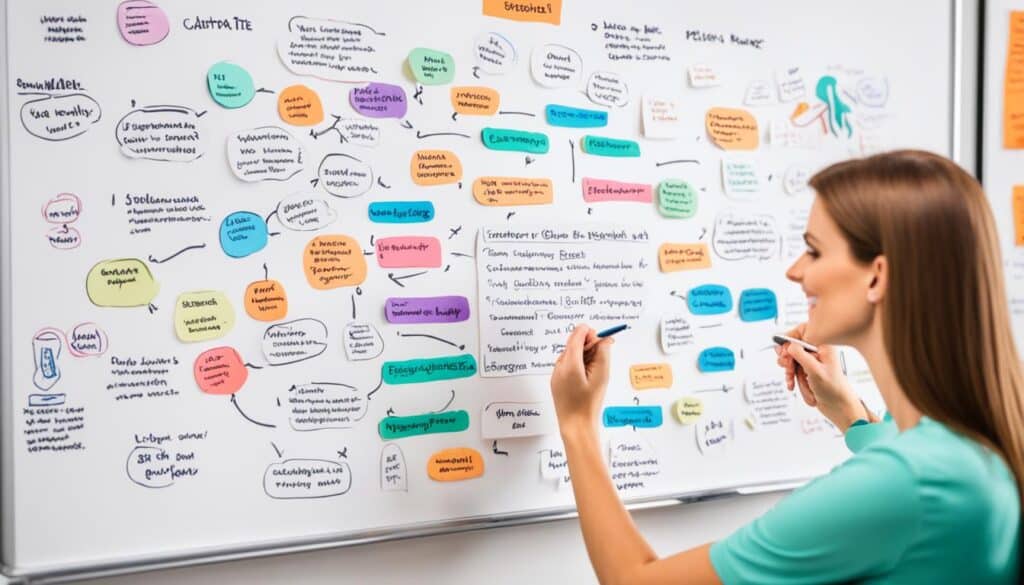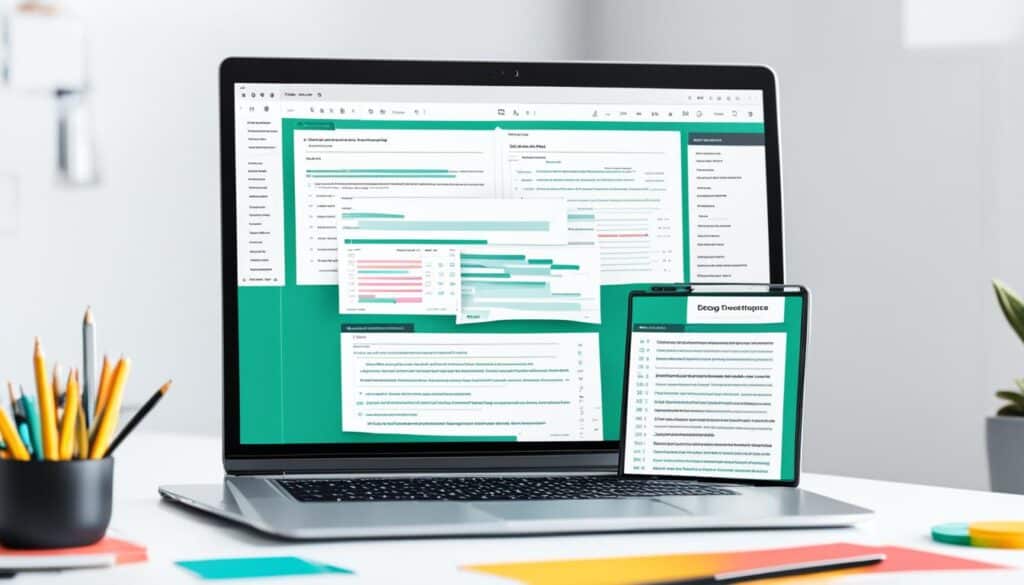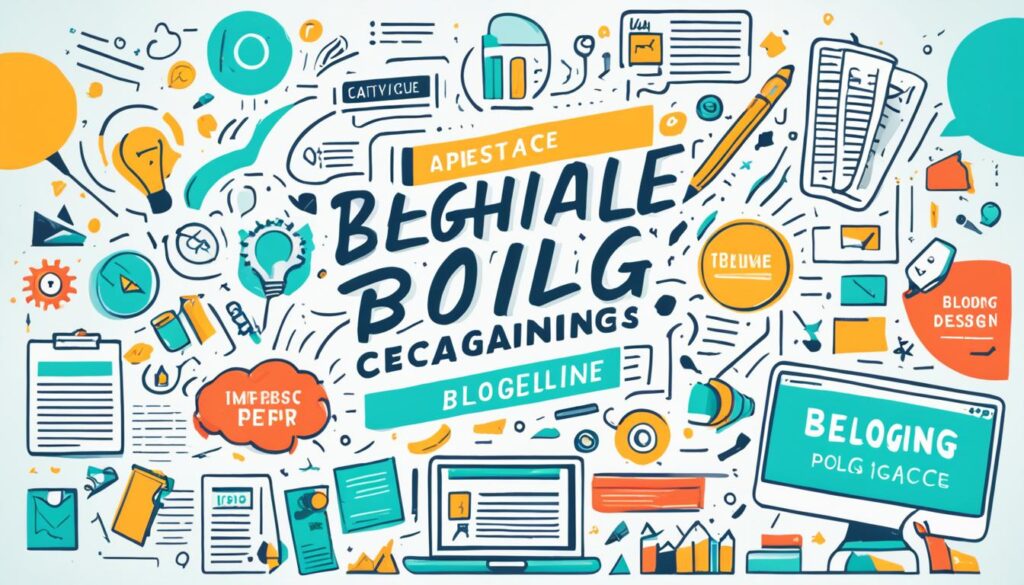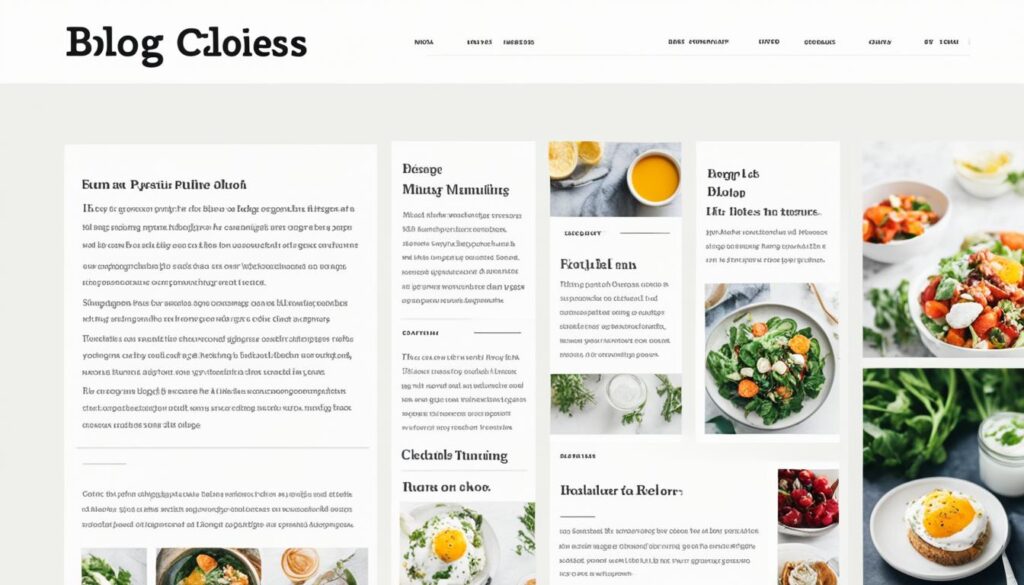
In the digital age, it has become important to learn to write engaging blog entries. This will not only help you in your DSE English exam, but will also improve your writing skills. This guide will teach you how to write engaging blog entries that will make you stand out in your writing.
Not only is blog entry a common question in the DSE English exam, it is also a key tool for social media and personal branding. Learning proper formatting and writing techniques will help you better express your ideas, engage your readers and stand out in the online world.
Highlights
- blog entry is a common question type for DSE English Paper 2 and Paper 3
- Mastering the blog entry format improves writing efficiency and article quality.
- Catchy headlines and quotes are the key to a successful blog entry.
- Clearly structured body text and concise paragraphs are important factors in improving readability
- The concluding paragraph should summarise the theme and encourage reader interaction.
What is blog entry?
The blog entry is a common form of writing on the Internet and is often tested in the DSE English exam. It consists of two main parts: the title and the content. This style of writing is relaxed, personalised and communicates directly with the reader.
Compared with other writing, blog entry is more flexible. It can be enriched with multimedia elements such as pictures and videos.
The following is a simple example of a blog entry structure:
| part | content |
|---|---|
| title | Eye-catching, generalised themes |
| introductory | Brief introduction to the main idea of the article |
| main text (as opposed footnotes) | Detailed presentation of views, experiences |
| Conclusion | Conclusion or call to action for readers |
It is important to learn how to write a blog entry for the DSE English exam. Candidates should be aware that the language should be colloquial and the content should be personalised to create a connection with the reader. They should also pay attention to the format to ensure that the article is clearly structured and easy to read.
In short, blog entry is a flexible and expressive form of writing. It allows writers to show their personality and interact with readers. In the DSE English exam, mastering this kind of writing skill can help candidates get a good grade in the writing section.
Importance of blog entry format
The format of a blog entry is crucial to the quality and appeal of the article. Good formatting makes articles easier to read, improves search engine rankings, and builds a professional image of the author. Let's take a look at some of these aspects in detail.
Improve readability
Proper formatting makes blog entries easier to read. Use short paragraphs, headings and subheadings, and lists to help make it easier to read. Statistics show that articles are easier to read at column widths of 80 characters or less.
Increase Search Engine Optimisation

Building a Professional Image
The well-designed blog entry format shows the author's professionalism. Uniform typography, appropriate white space and background colours, as well as a good mix of graphics and text make a good impression on readers. This helps to build up authorial authority and trust among readers.
| formatting element | effect |
|---|---|
| Title and Subtitle | Guided reading and highlighting |
| short paragraph | Improve readability |
| listings | Organisational information for easy browsing |
| Pictures | Increase attractiveness and aid understanding |
In short, good blog entry formatting not only improves the quality of the article, but also makes the reading experience better for the readers. Therefore, it is important to pay attention to the importance of formatting when creating blog entries to enhance the effectiveness of your posts.
Basic structure of blog entry
- Title: Attracts the reader's attention and summarises the theme of the article.
- Introduction: briefly introduce the content of the article to arouse reading interest.
- Body: Detailed description of the topic in paragraphs, may use subheadings
- Conclusion: Summarise the main points and give a final opinion or recommendation.
- Tagging: add relevant keywords to improve search visibility
In addition to these 5 basic elements, a quality blog entry should also focus on the organisation and development of the content. Using multimedia elements such as short paragraphs, lists and images can enhance readability. Remember, good structure helps readers understand and remember your content better.
A good structure is half of the success of a blog entry. It not only improves the reading experience, but also increases the impact of the article.
When writing, stick to these 5 elements and make sure that each part of your blog works as it should. This will not only improve the quality of your articles, but also attract more readers and improve your blog's ranking in search engines.
Catchy Headline Writing Tips
Writing catchy blog titles is crucial to increase readership. A good headline will keep your readers interested and increase the click-through rate, which in turn will increase the exposure of your article. Here are some practical tips to help you write catchy headlines.

Use of keywords
Incorporating relevant keywords in your headlines can improve your search engine rankings. Choose keywords that match the content of the article and fit naturally into the headline. For example, if the article is about 'healthy eating', you may consider using keywords such as 'balanced nutrition' and 'low-calorie recipes'.
Keep it simple and clear
Headings should be short and punchy, and get to the heart of what the article is about. Studies have shown that headlines of 10-15 words are most effective. Avoid long, complicated sentences so that readers can understand the main idea at a glance.
Intrigue the reader
Use questions, lists of numbers, or surprising facts to pique the reader's interest. For example, "6 Tips for Increasing Productivity" or "Healthy Eating Myths You Didn't Know". Headlines like these will pique the reader's curiosity and prompt them to click through to the full article.
With these tips, you can create more attractive blog titles. Remember, a good title not only attracts readers, but also improves your article's search engine ranking and brings more traffic to your blog.
Ways to write an introductory paragraph
- Open the door to the mountain: directly to the topic, so that readers understand the content of the article.
- Ask questions: to stimulate the reader's thinking and keep them reading.
- Citing statistical data: adding credibility to the article.
- Storytelling: Introduce the topic with a short story.
- Use metaphors: Vivid metaphors help readers understand complex concepts.
- Stress the importance: Explain why the topic is important to the reader.
- Forecast content: A brief summary of the main points that will be discussed in the article.
The introductory paragraph should be concise and strong, usually no more than 3-4 sentences. Its purpose is to attract the reader and express the main idea of the article. A good introduction will stimulate the reader's interest and make them want to continue reading.
The excellent introduction is like an open door inviting the reader to step into your world of ideas.
When writing an introduction, make sure the language style is consistent with the article. Use keywords appropriately to help with SEO and provide direction for reading.
Organisation and development of the text
The body is the core of a blog entry and needs to be carefully organised and developed. A good blog entry usually has three parts: introduction, body and conclusion. The body is the longest part of the blog entry, allowing us to discuss and analyse it in depth.
Here are some ways you can better organise your body copy.
Use of subheadings
Subheadings help readers to quickly understand the structure of the text and find the parts of interest. It is recommended to use one sub-heading for every 300-500 words to make the content easier to digest. Subheadings should be concise and summarise the main content of the section.
Paragraph Structure
Each paragraph is built around a central idea, usually 5-8 sentences. There should be logical continuity between paragraphs, and the use of transitional sentences helps the reader to make smooth transitions. Keep sentences simple to improve readability.
Adding Multimedia Elements

Good body copy communicates ideas effectively and increases reader engagement. Remember to review and revise your content regularly to ensure that it is logical and professional. Use these tips to make your blog entry more attractive and persuasive.
Importance and Tips for Closing Paragraphs
The closing paragraph is the key to the essay and will be remembered by the reader. A good ending should be thought-provoking and memorable for the reader. Statistics show that 80% readers pay special attention to the end of an article.
When writing a conclusion, it is important to reiterate the main points of the article. But don't repeat them. Summarise the key messages and provide new insights or future perspectives. Use phrases such as "in summary" or "in conclusion" to help readers identify the conclusion.
"A good ending is not just the end of the essay, it is the beginning of the reader's thinking." - Dr. Steve Wallace
Finally, the closing paragraph should create a personal link. Share personal insights, ask questions, or invite readers to discuss. This will make the article more interactive and increase reader engagement.
| Ending Tips | effect |
|---|---|
| Reiterate the key points | Reinforcement of the main points |
| Providing new insights | Extended Reader Reflections |
| Call to Action | Encourage Reader Participation |
blog entry format
Blog entry formatting is critical to improving the readability and appeal of your articles. Good formatting makes it easier for readers to understand the content and increases search engine optimisation. Below are a few common blog entry formatting elements:
- Clear Title
- Intriguing introductions
- Structured Text
- Attractive pictures or multimedia elements
- Concluding Remarks

| part | content |
|---|---|
| title | Attractive and contains keywords |
| introductory | A concise summary of the article's topic |
| main text (as opposed footnotes) | Use subheading segments with related images or tables |
| end | Summarise the key points and provide a call to action |
| Label | Add related keyword tags |
Remember, good blog entry formatting not only improves the reading experience, but also increases article sharing and search engine ranking. Therefore, it is important to pay attention to the importance of formatting when writing blog entries.
Language style of blog entry
Language style is important when writing a blog entry. It attracts readers and makes the article more readable and impactful. Let's look at three key elements of language style.
Maintaining personalisation and dialogue
Using pronouns such as "you" and "we" makes the reader feel like you are talking to them. This style of language makes the essay more relatable. For example, "Have you ever had trouble writing? We've all been there."
Use a light and humorous tone
Proper humour can make an essay more interesting. For example, use clever metaphors or witty remarks to add interest. But remember, humour should be in moderation and not overdone. This will make the article more enjoyable for the reader.
Avoid being overly formal or academic
Blog entries should be professional, but not too formal or academic. Avoid difficult jargon or long sentences. Explain complex concepts in a simple way. For example, "This method improves your writing efficiency" can be changed to "This trick will help you write faster and better."
| Language Style | Effect | typical example |
|---|---|---|
| Personalised Dialogue | Increase affinity | Did you know that writing can be fun? Writing can be fun! |
| Light-hearted humour | Enhancement of fun | Writing is like cooking soup, it takes time to make it delicious. |
| Simple and easy to understand | Enhance readability | To put it in simple terms, I would like to make it clear that it is a complicated matter. |
SEO tips for optimising blog entries
Since 2015, many blogs have gone from zero to over 600,000 search traffic. This shows the importance of SEO to increase blog entry exposure. Here are 12 practical tips to help boost your blog entry SEO results:
- Keyword Research: Finding Keywords with Tools Like Ahrefs Keywords Explorer
- Content Writing: Adapting Essays to Search Ideas and Formatting
- On-page SEO: Optimising titles, descriptions and URLs
- Link building: adding internal and external links
- Appropriate article length: at least 500 words, but not too long
- Optimised structure: clear introduction, body and conclusion
- Keyword Dispersion: Avoid overstuffing, use relevant vocabulary
- Regular Updates: Keeping Your Website Active
- Media enrichment: add charts, videos, and more!
- Internal Links: Help Search Engines Discover New Pages
- Title Optimisation: SEO Compliant and Attractive to Readers
- Use of subheadings: enhancing readability and structural clarity
These tips can significantly improve your blog entry's ranking in search engines and attract more target readers. Remember, SEO is an ongoing process and requires regular updating and optimisation of content to maintain good ranking results.
| SEO strategy | Effect |
|---|---|
| Keyword Research | Discover potential traffic sources |
| Content Optimisation | Improve Search Engine Rankings |
| Link Building | Adding authority to your website |
| regular update | Keep your website active |
in conclusion
Writing a good blog takes practice and skill. Proper formatting makes posts easier to read and can also help with SEO.From catchy headlines to engaging introductions to strong endings, every part counts.
It is important to keep the language style light and humorous. This will attract readers, but avoid being overly formal or academic. It's also important to understand SEO techniques that will make your articles more popular.
Remember, blogs are not just a way to convey information, but also a platform to communicate with your readers. Through continuous practice and improvement, you can write engaging blogs that bring value to your readers and achieve your writing goals.
FAQ
What is blog entry format?
The blog entry format is a structure and format for blog posts. It usually consists of an intriguing title and a short introduction. It also includes subheadings and paragraphs to organise the body of the post, as well as a conclusion.
Adopting proper formatting can make an essay more readable and engaging.
Why is blog entry format important?
The blog entry format is important for the article. It improves the readability of the article and makes it easier for readers to understand. It also increases the search engine optimisation of the article, which in turn increases the ranking and traffic of the website.
In addition, good formatting helps to establish a professional image, demonstrating the author's professionalism and seriousness.
What are some tips for writing catchy headlines?
There are a few techniques to be used in writing appealing headlines. Firstly, use keywords appropriately to increase the exposure of your web page. Secondly, keep the title simple and clear to highlight the main idea of the article.
Finally, it arouses the curiosity of the readers and stimulates their desire to read.
How to write a good introductory paragraph?
There are several ways to write an introductory paragraph. First, summarise the theme and main points of the article to help the reader get an initial idea of the content.
Next, ask an engaging question or argument to pique the reader's interest. Finally, share a relevant personal experience or storyline to increase rapport.
How should the body of the text be organised and developed?
There are several techniques for organising and developing the content of the text. First, use subheadings to help the reader understand the main points.
Secondly, the paragraphs should be clearly structured, with each paragraph explaining a point or detail. Finally, add multimedia elements, such as pictures or videos, to increase the richness of the content.
Why are closing paragraphs important?
The closing paragraph is crucial to the blog entry. It can summarise the core ideas and key points of the article. This not only reinforces the reader's impression, but also leaves a lasting impression.
The concluding paragraph also promotes action and leads the reader to take further action.

